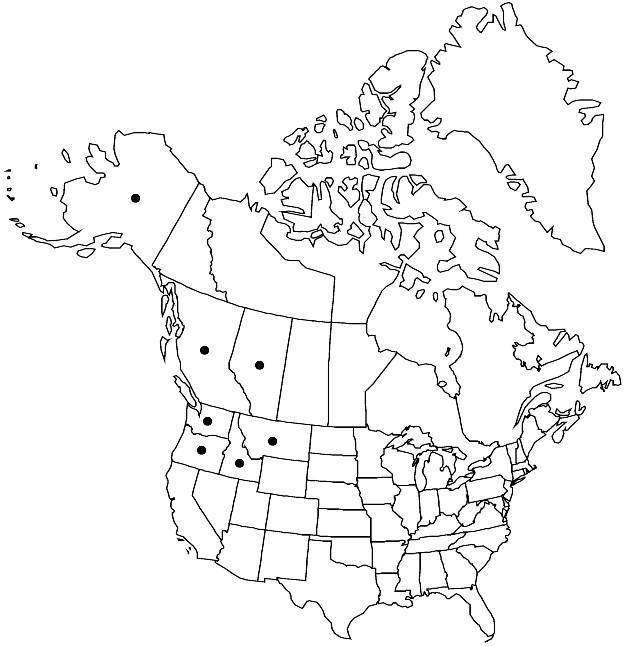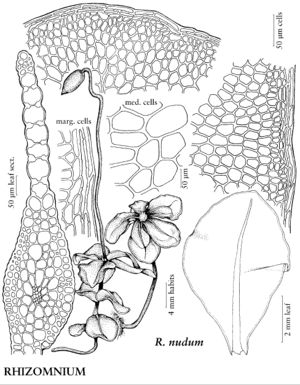Rhizomnium nudum
Ann. Bot. Fenn. 5: 143. 1968.
Plants (1–) 2–5 cm. Stems dark red or reddish-brown when old; micronemata absent. Leaves green to dark green, weakly contorted when dry, broadly obovate, elliptic, or often ± orbicular, (3.8–) 4–6 (–9) mm; margins green or sometimes pale reddish, 1–4-stratose; apex rounded, occasionally retuse, rarely short-apiculate; costa ending well before apex to 7/8 leaf length or rarely subpercurrent; medial laminal cells elongate or short-elongate, (60–) 70–130 (–170) µm, rarely collenchymatous, walls with broad central pits; marginal cells linear or short-linear, in (1–) 2 (–3) rows. Sexual condition dioicous. Seta 1–2.5 cm. Capsule ovate, 2.5–3.5 mm; operculum conic-apiculate; exostome yellow, lamellae 18+. Spores 25–35 µm.
Phenology: Capsules mature spring.
Habitat: Forests along streams, marshes, swamps on moist soil, humus, rock
Elevation: low to moderate elevations
Distribution

Alta., B.C., Alaska, Idaho, Mont., Oreg., Wash., Asia
Discussion
Rhizomnium nudum is one of the most easily recognized species of the genus. The plants are characterized by the absence of micronemata, by their broad, weakly contorted, and nearly flat leaves when dry, and by having thin central laminal cell walls (broad pits), the bar bell appearance of the walls observed in leaf sections. The leaves are only weakly undulate when moist.
Selected References
None.
Lower Taxa
"subpercurrent" is not a number.
